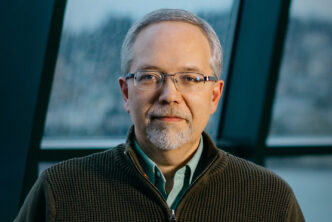Logos will be at the Evangelical Theological Society’s (ETS) National Conference in San Diego. A few of us are giving papers at the conference. Here are the details; if they sound interesting to you we’d love to see you drop by the sessions.
Of course, we’d also love for you to drop by our booth any time during the conference. So if you’re in San Diego at ETS, come on by and see what we’ve been up to (like the Qumran Biblical Scrolls and also the Semitic Inscriptions project).
We’ll see you in San Diego!
Wednesday, Nov. 14, 4:10-4:50 PM
Garden Salon Two
Richard W. Brannan
Richard Bauckham and Eyewitness Testimony: Does His Narrative Device Occur Outside of the Synoptics?
A recent book by Richard Bauckham (Jesus and the Eyewitnesses) describes Marcan usage of something he calls the “plural to singular narrative device” (Bauckham 156-157). He defines the device using syntactic terminology: “a plural verb … without an explicit subject is used to describe the movements of Jesus and his disciples, followed immediately by a singular verb or pronoun referring to Jesus alone” (Bauckham 156-157). Using this device, Bauckham posits Mark’s usage of Peter’s eyewitness testimony as underlying source for 21 different movements of Jesus (e.g. Mk 1.21).
Bauckham’s exploration of this narrative device is limited to the synoptic gospels. But does the device occur elsewhere? This paper argues that if such a thing as the plural-to-singular narrative device exists, then Ac 18.19 should be considered an additional Lucan instance of the device.
Thursday, Nov. 15, 11:10-11:40 AM
Sunset
Michael S. Heiser
The Professor and Mariamne: The Textual and Statistical Justification for Marooning James Tabor’s “Jesus Tomb Theory” on Gullible’s Island
(This session is part of the Near East Archaeological Society’s general session)
On March 4, 2007 the Discovery Channel aired a documentary touting the discovery of the “Lost Tomb of Jesus.” Negative responses quickly followed from all quarters of academia, across the theological spectrum. There has been one notable exception among biblical scholars, Dr. James Tabor, Professor and Chair of the Department of Religious Studies at the University of North Carolina at Charlotte. Despite the fact that popular interest in the Jesus Family Tomb has declined steadily in the wake of the overwhelmingly unfavorable response, Tabor has defended the film’s thesis. The reason is straightforward: an identification of the Talpiot tomb as the Jesus Family Tomb would lend support to Tabor’s own theory about the historical Jesus. This paper overviews and evaluates Tabor’s ongoing arguments for a Jesus family tomb in support of his own larger thesis about the historical Jesus.
Thursday, Nov. 15, 3:00-3:40 PM
Royal Palm Salon Two
Steven Runge
Teaching them what NOT to Do: The Nuances of Negation in the Greek New Testament
Most descriptions of negation are primarily concerned with highlighting the distinctions between ου and μη. Little attention is given to variation in the syntax of negation constructions. The biblical writers frequently used negation to describe what did not happen as a means of adding emphasis to what did happen. Emphasis can also be assigned by emphasizing a specific component of a clause rather than the entire negated clause. The purpose of this paper is to describe and illustrate the basic patterns observed in the Greek NT. Based on this description, representative examples will be presented that demonstrate the exegetical payoff of careful attention to negation.
Friday, Nov. 16, 11:30 AM -12:10 PM
Royal Palm Salon Five
Michael S. Heiser
Did Jesus Allow for Reincarnation? Assessing the Syntax of John 9:3-4
In a 2003 article in the scholarly journal Filología Neotestamentaria entitled, “The True Meaning of Jn 9:3-4,” J. D. M. Derrett raised the possibility that Jn 9:3-4 (the man blind from birth) could plausibly be construed as evidence that Jesus was not opposed to the idea of reincarnation. Derrett argued that the disciples’ question about why the man was born blind suggests that the disciples were prepared to accept that the man had sinned in the womb or in a previous life. According to Derrett a specific syntactical structure (the “relative negative”— ου/μη [or any negative particle] . . . αλλα, followed by ινα) in Jesus’ response does not denote a categorical denial of the idea. This paper tests this assertion by means of Logos’ implementation of the OpenText.org syntactically-tagged database.







